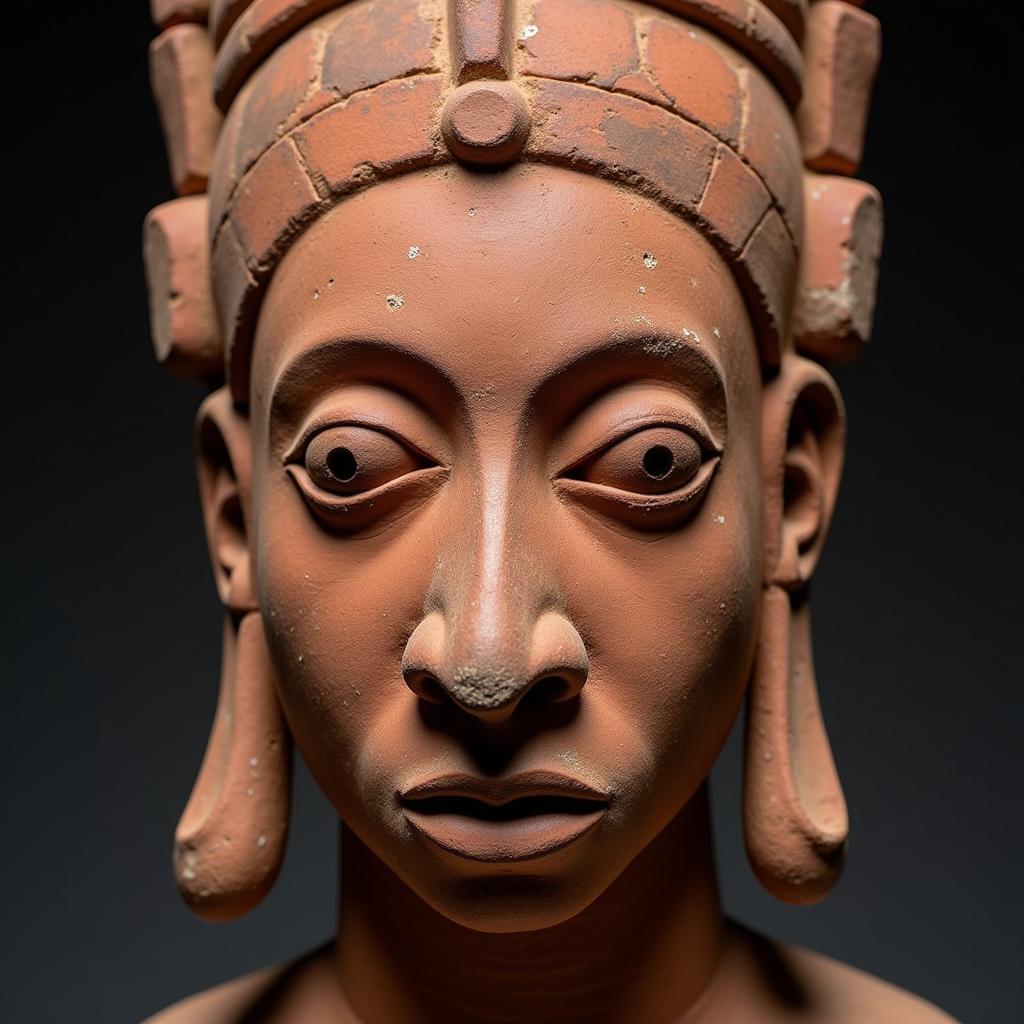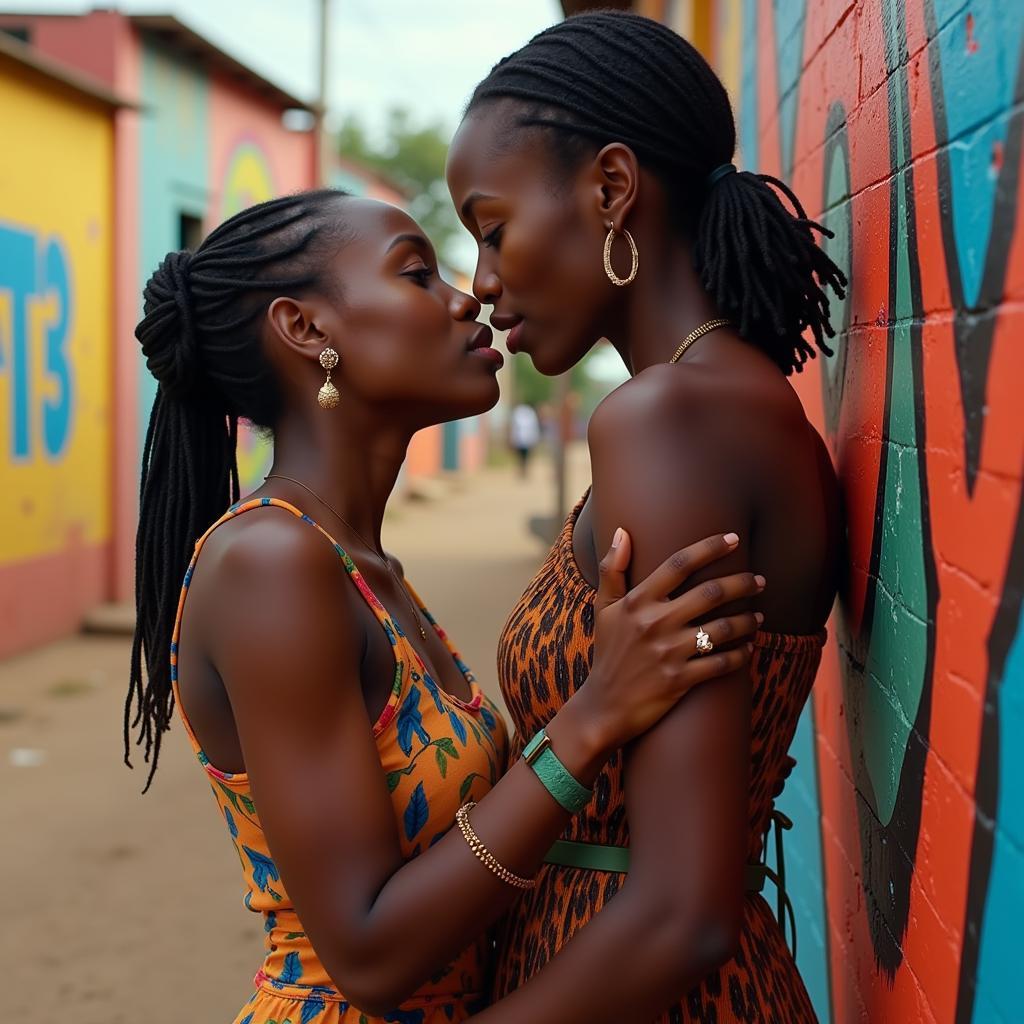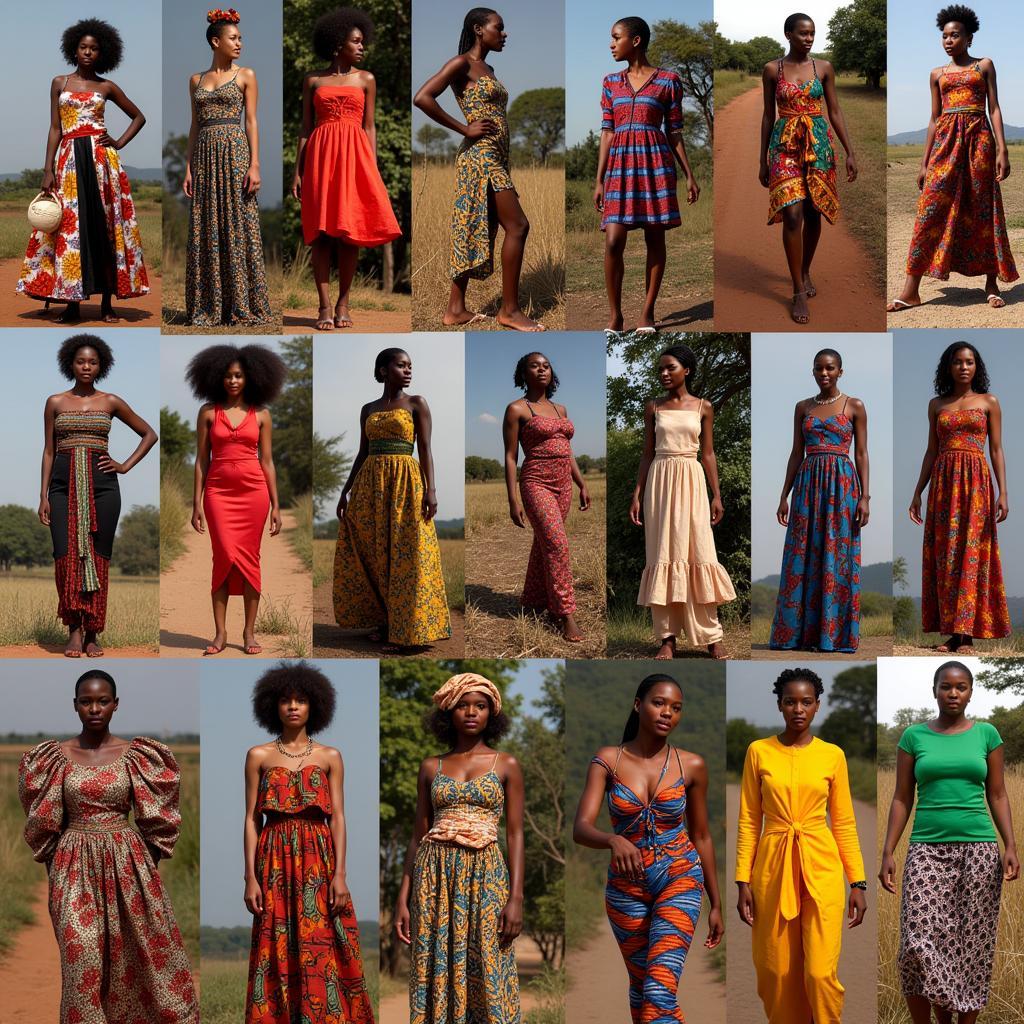Understanding the African Elephant Group
African Elephant Group dynamics are a fascinating aspect of these majestic creatures’ lives. From the matriarchal leadership to the complex social bonds, understanding how these groups function is key to appreciating their intelligence and resilience. This article delves deep into the intricate lives of African elephant groups, exploring their structure, behaviors, and the challenges they face in a changing world.
The Structure of an African Elephant Group
African elephants, unlike their Asian counterparts, primarily live in matriarchal groups led by the oldest and most experienced female, known as the matriarch. These groups, also called herds, can range in size from a few individuals to over a hundred, consisting mostly of related females and their young. The matriarch’s role is crucial; she guides the group in finding food and water, makes decisions about migration routes, and protects the younger members from predators. Males, on the other hand, typically leave the herd upon reaching adolescence, living solitary lives or forming small bachelor groups.
Here we see the strong influence of the matriarch on an African elephant group’s survival. Her wisdom and experience are invaluable, particularly in navigating the harsh African landscapes and ensuring the continuation of their lineage. This social structure is vital for their continued existence. You can explore more about specific groups in dedicated resources, like those focusing on the African Elephant Specialist Group. african elephant specialist group
Communication Within the African Elephant Group
Communication within an African elephant group is a complex interplay of vocalizations, infrasound, and body language. From rumbling calls that travel for miles to subtle ear movements and trunk gestures, elephants communicate constantly. These signals convey a range of information, from warnings about danger to expressions of affection and comfort. The intricate communication system allows the group to maintain cohesion, share vital information, and strengthen their social bonds. For instance, a low rumble can signal the discovery of a water source, while a high-pitched trumpet blast indicates imminent danger.
This constant communication is crucial for the group’s survival, allowing them to react quickly to threats and share resources efficiently. Elephants also use infrasound, sounds too low for humans to hear, to communicate over long distances, strengthening bonds between separated family members. Just imagine the intricate network of communication humming across the savanna, connecting these intelligent giants. Check out high-quality images showcasing these groups to truly appreciate their magnificence. african elephant group hd
Threats to African Elephant Groups
Sadly, African elephant groups face numerous threats, primarily from human activities. Poaching for ivory remains a significant challenge, decimating populations and disrupting social structures. Habitat loss due to expanding human settlements and agriculture further restricts their range and access to vital resources. Human-wildlife conflict, often resulting in the killing of elephants perceived as threats to crops or property, also contributes to their decline.
These challenges highlight the urgent need for conservation efforts to protect these magnificent creatures and their intricate social structures. We must address these issues to ensure the long-term survival of African elephant groups.
What are the different roles within an African Elephant Group?
The matriarch leads the group, making crucial decisions. Other adult females assist in raising young and protecting the group. Young elephants learn from the older females and play together, developing essential social skills.
How do African Elephant Groups find food and water?
The matriarch relies on her experience and memory to locate resources. She also communicates with other elephants to share information about potential food and water sources.
Why are African Elephant Groups important for conservation?
Protecting elephant groups ensures the preservation of their complex social structures and cultural knowledge. This is essential for the long-term survival of the species. See compelling images capturing the essence of these groups in black and white. african elephant group black and white
Conclusion
African elephant groups are more than just a collection of individuals; they represent complex societies with intricate social bonds, sophisticated communication systems, and remarkable resilience. Understanding the dynamics of these groups is crucial for their conservation. By protecting these groups, we are not only safeguarding a magnificent species but also preserving a vital part of Africa’s natural heritage. Let’s work together to ensure that future generations can continue to marvel at the majesty of the African elephant group. Consider exploring related topics, such as the fascinating African bush baby, to further expand your knowledge of African wildlife. african elephant phylum
FAQ
- What is the average size of an African elephant group? The size can vary greatly, from a few individuals to over a hundred.
- How long do African elephants live? They can live up to 70 years in the wild.
- What do African elephants eat? They are herbivores, feeding on grasses, leaves, bark, and fruits.
- What are the main threats to African elephants? Poaching, habitat loss, and human-wildlife conflict are the primary threats.
- How can I help protect African elephants? Support conservation organizations, spread awareness, and advocate for policies that protect elephants and their habitats.
- What is the role of the matriarch in an African elephant group? She leads the group, making decisions about food, water, and migration routes.
- How do male African elephants differ from females in terms of social structure? Males typically leave the group upon reaching adolescence and live solitary lives or form small bachelor groups.
Need more information? Contact us! Phone: +255768904061, Email: kaka.mag@gmail.com or visit us at Mbarali DC Mawindi, Kangaga, Tanzania. We have a 24/7 customer service team available.




